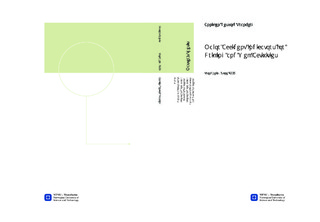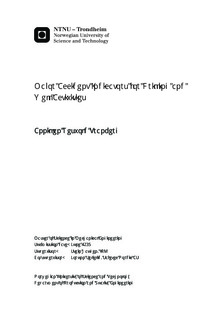| dc.description.abstract | Several recent accidents such as the Deepwater Horizon Blowout in 2010 and the Texas City Refinery Explosion in 2005 have demonstrated the need for better control of risk in complex systems in order to avoid substantial losses of assets such as human lives, economic values and the environment. Monitoring of risk is a key element in the overall risk management process. For this reason, the objective of this master thesis is to apply a generic methodology for the identification of major accident risk indicators on a case relevant to offshore drilling activities. In this methodology, a factor model which illustrates how risk influencing factors influence the probability and consequences of an offshore blowout event is developed. Factor models developed with the methodology used in the thesis can be used to visualize the most critical factors that are relevant to major accident risk, and how different factors are linked together. It also shows interdependencies between the factors. This kind of qualitative overview can lead to a more holistic understanding of the work processes and improved risk awareness throughout the organization.Relevant theory of well and drilling activities is introduced in Chapter 3, the methodology is presented in Chapter 4, and the application of the methodology is performed in Chapter 5. The purpose of the case study is to develop factors and indicators for monitoring major accident risk associated with blowouts in drilling operations. This hazardous event is chosen because uncontrolled release of pressurized hydrocarbons in the form of blowouts is a large contributor to the total risk picture in well and drilling activities and has caused catastrophic major accidents in the past. There are altogether 27 probability influencing factors and nine consequence influencing factors in the factor models developed in this master thesis. In Section 5.3, the factor model is tested by applying the framework in a retrospective analysis of various investigation reports from five recent accidents. The factors are related to observations from investigation reports and classified according to the state described in the investigation reports. The results from the testing process indicates that the factor model can be a useful supplementary tool for accident investigations, and the main conclusion from the validation tests is that the findings from the investigation reports to a large extent fit into the factor model, though some findings were harder to fit than others.Section 5.4 shows the indicators which have been identified in the case study. Data sources, measuring frequency and specific classification dimensions are not included, because this falls beyond the scope of the master thesis. An important recommendation for further work is that the model that has been developed in the case study should be implemented and tested in a full scale setting, to gain more experience with both the use of the methodology and the model itself. The model should also be tested further as a supplementary tool in accident investigation. Also, the model should be further developed quantitatively, to gain a better understanding of the influences between the factors. | nb_NO |

